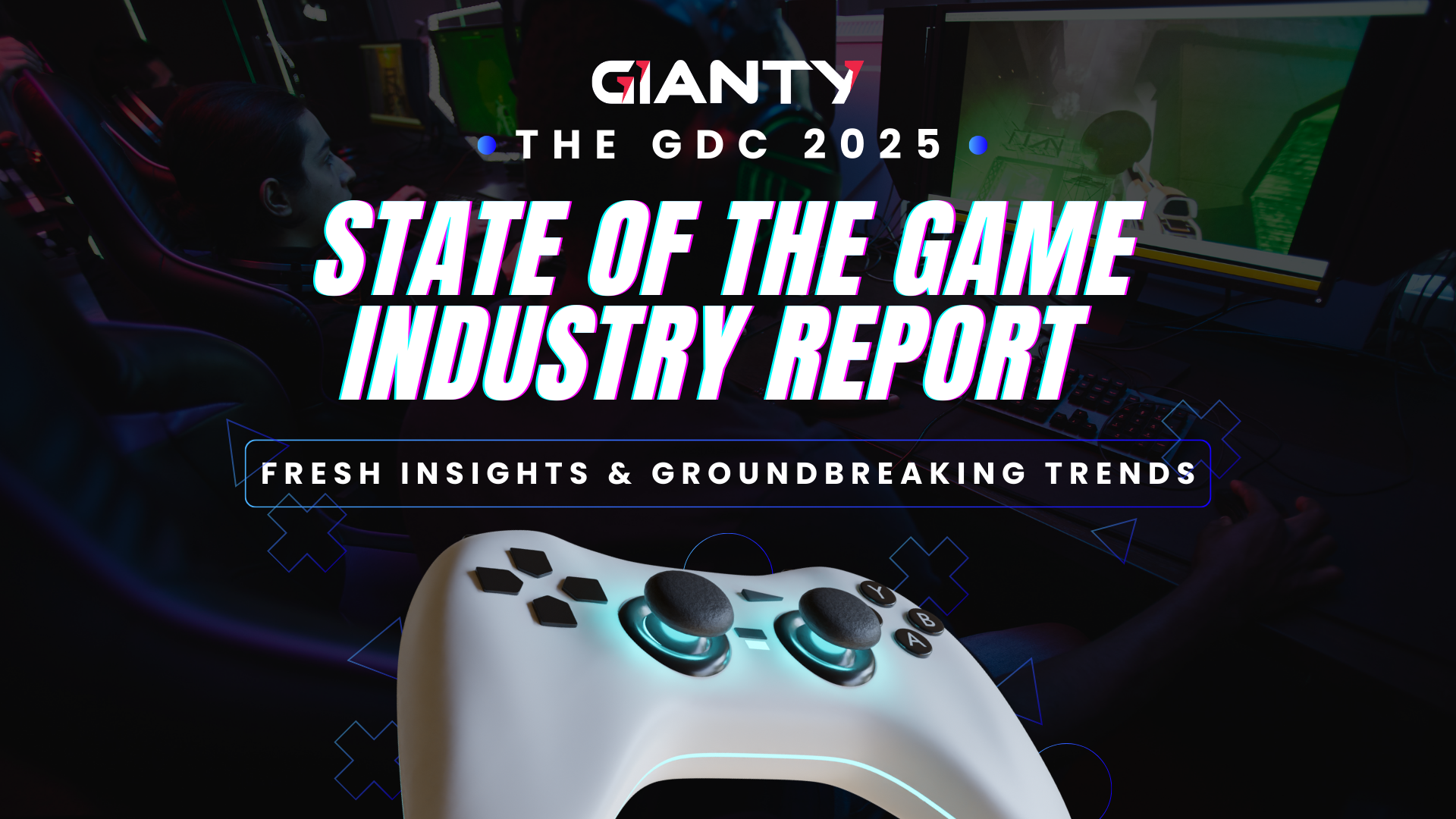What is Serious game?
Serious games are deliberately crafted with objectives extending beyond mere amusement.
Their utility spans diverse sectors such as defense, education, scientific inquiry, healthcare, emergency response, urban planning, engineering, politics, and the arts.
Unlike conventional entertainment-focused games, serious games serve a higher purpose. They aim to inform, raise awareness, or tackle societal issues. These games often integrate insights from game studies, philosophy, and media psychology to effectively engage players.
The Serious Games Market is categorized by:
- Application (Advertising & Marketing, Simulation Training, Learning & Education)
- End-user Industry (Healthcare, Education, Retail, Media & Entertainment, Automotive, Government), and
- Geography

Some types of Serious games
- Educational Games: These are utilized in teaching and learning, blending educational material with interactive gameplay.
- Healthcare Games: Specifically crafted to enhance health outcomes, train medical practitioners, or aid patients in rehabilitation.
- Persuasive Games: Intended to influence players’ attitudes or behaviors toward particular topics or causes.
- Training Simulations: Deployed in sectors such as defense, emergency management, and aviation to replicate real-world scenarios for training purposes.
- Social Impact Games: Tackle societal challenges, foster empathy, and stimulate critical thinking.
Benefits of Serious Games
- Engagement: Serious games capture players’ attention, transforming learning and problem-solving into enjoyable experiences.
- Interactive Learning: These games offer hands-on opportunities for users to apply knowledge within dynamic environments.
- Motivation: Incorporating gamification features such as rewards, challenges, and progress tracking maintains user engagement and motivation.
- Measurable Results: Serious games enable the tracking of progress and the assessment of learning outcomes, facilitating measurable improvements.
Some remarkable Serious Games making impactful strides
1. Re-Mission
Crafted by Realtime Associates, the Re-Mission series stands as a beacon of hope for young cancer patients.
These games not only entertain but also address the intricate psychological and behavioral nuances crucial for successful cancer treatment.
Distributed by HopeLab to young patients, families, and healthcare facilities globally, Re-Mission exemplifies gaming’s potential as a therapeutic tool.

2. SimPort-MV2
Tygron’s SimPort-MV2 emerges as a sophisticated construction and management simulation, intricately mirroring the complexities of planning and developing the Second Maasvlakte in Rotterdam’s bustling port.
While primarily a training tool for Port of Rotterdam staff, its immersive gameplay also serves as a valuable educational resource for students and industry professionals alike.

3.Whyville
Catering to the curious minds of 8 to 14-year-olds, Whyville serves as an immersive educational platform blending virtual world simulations with interactive gameplay.
With a user base exceeding 7 million, Whyville’s accolades for educational excellence and safety features underscore its impactful role in fostering learning across diverse subjects spanning science, business, art, and geography.

4. Fiscal Ship
Recognized by the New York Post as a standout educational game during the pandemic, Fiscal Ship challenges players of all ages to navigate the complexities of government budgeting toward sustainability. Its engaging gameplay not only educates but also sparks meaningful conversations around fiscal responsibility and policy-making.

5. Sea Hero Quest
Within healthcare, Sea Hero Quest harnesses the power of play data to detect dementia in its early stages, offering a gamified solution to a pressing medical challenge.

6. Tomnod
Pioneering digital crowdsourcing, Tomnod leverages high-definition satellite imagery to mobilize millions in search and rescue efforts during natural disasters. Notably, its involvement in locating the missing Malaysia Airlines plane, MH370, showcases the potential of gaming communities to contribute meaningfully to real-world crises.

7. BYJU’S – eLearning Revolution
Amidst the pandemic-driven surge in e-learning, platforms like BYJU’S in India strategically integrate serious games to reignite student interest and engagement. Through skillful gamification, these platforms elevate learning experiences, particularly among younger learners, fostering a more dynamic educational landscape.

8. Garfield’s Count Me In
Championing behavioral change through gaming, Grandel Games’ ‘Garfield’s Count Me In’ stands out for its innovative approach to primary education math exercises. Rooted in the renowned ‘Math Wall’ methodology and tailored by educational experts, it exemplifies the seamless integration of gameplay and learning objectives.

9. CyberSprinters
Launched by the National Cyber Security Centre (NCSC), CyberSprinters emerges as a pivotal educational tool, imparting crucial cybersecurity lessons to primary school students and youth organizations. Through interactive gameplay, it equips young learners with essential digital literacy skills, empowering them to navigate an increasingly complex cyber landscape.

Serious gaming market growth and trends
In essence, the serious games market is flourishing, buoyed by technological advancements, heightened awareness, and a wide array of applications across various sectors. Whether in healthcare, education, or training, serious games continue to exert a significant influence.
Market growth researches
1. Mordor Intelligence Report
Mordor Intelligence‘s analysis indicates that the serious games market reached an estimated value of $14.06 billion in 2024, with projections forecasting its growth to $43.65 billion by 2029. This robust expansion is anticipated to sustain a CAGR of 25.43% during the forecast period (2024-2029).

The adoption of serious games transcends multiple sectors, encompassing education, training, problem-solving, social skills development, teamwork, and decision-making.
Notably, enterprise gaming systems are witnessing an uptick, finding applications in employee training and sustainability education.
2. IMARC Group Analysis
IMARC Group’s findings reveal that the global serious games market achieved a valuation of $11.1 billion in 2023.
Looking forward, the market is poised for significant expansion, projected to soar to $59.4 billion by 2032, demonstrating an impressive CAGR of 20.1% during the period spanning 2024-2032.

3. Insights from Future Market Insights
Future Market Insights observes substantial growth in the global serious game industry, with a CAGR of 18.2% recorded from 2018 to 2022. Commencing at $3.6 billion in 2018, the market size surged to $7.0 billion by 2022.
4. Global Market Projection:
As per predictions, the global serious game market reached around $9 billion in 2022 and is anticipated to burgeon to approximately $32.73 billion by 2030. This trajectory is underlined by a CAGR of roughly 18.41% between 2023 and 2030.

Emerging Trends in the Serious Gaming Market
1. Rising Demand in Learning and Education Applications
Digital games and simulations have garnered significant attention for their effectiveness and high engagement levels in learning environments. Serious games are increasingly recognized as potent educational tools, offering a cost-effective alternative to traditional classroom-based learning. They facilitate diverse learning outcomes spanning perceptual, behavioral, affective, cognitive, physiological, motivational, and social domains.
2. Notable Growth Expected in Asia Pacific
The Asia-Pacific region is poised for substantial market growth, driven by heightened awareness of serious games and the concept of Game-based Learning (GBL). Increased investments by major players and a surge in demand for mobile-based serious gaming further propel market expansion in this region.

3. Healthcare Sector: a Prime Focus for Serious Gaming
The healthcare industry emerges as a key target for the integration of serious games, leveraging simulation and visualization technologies to impart essential procedural and cognitive skills to interdisciplinary healthcare professionals.
4. Regional Collaborations Driving Innovation
Regional startups are forging partnerships to drive advancements in serious gaming applications. For instance, collaborations like SIMS and SGA’s joint effort to host the RICH Games 2022 conference in Southeast Asia highlight efforts to pioneer innovative solutions and elevate healthcare education standards.
Current major players in the Serious game market
The Serious Games Market is marked by intense competition, largely driven by the presence of numerous established players operating on a global scale.
While the market exhibits a moderate level of concentration, key industry participants employ strategies such as acquisitions, mergers, and continual service innovation to maintain their competitive edge.
Prominent players in this arena include:
1. BreakAway Ltd.: Specializing in crafting immersive and educational game experiences, BreakAway tailors serious games for diverse sectors including defense, healthcare, and training.
2. Designing Digitally, Inc.: Renowned for its collaboration with organizations to develop engaging e-learning solutions, Designing Digitally excels in creating customized training experiences, including serious games.
3. Diginext: Based in France, Diginext is celebrated for its innovative approach to serious games, crafting simulations and training tools primarily for defense, aerospace, and other industries.
4. IBM Corporation: IBM explores the potential of serious gaming across education, healthcare, and business domains, leveraging technology-driven solutions to bolster market growth.
5. Cisco Systems Inc.: Investing notably in serious games, Cisco focuses on areas such as networking, cybersecurity, and digital transformation to advance its offerings in this space.
6. Virtual Heroes, Inc.: Specializing in the development of interactive 3D simulations and serious games, Virtual Heroes’ portfolio spans healthcare, military training, and beyond.
7. Nintendo Co. Ltd.: Renowned for its gaming prowess, Nintendo has ventured into the realm of serious gaming, developing educational games and interactive experiences.
8. Promotion Software GmbH: With a focus on serious games for marketing and training purposes, Promotion Software creates engaging experiences tailored for various industries.
9. Revelian: Revelian specializes in designing serious games for cognitive assessments, recruitment, and talent management, providing organizations with tools to make informed hiring decisions.
10. Tata Interactive Systems: Offering customized e-learning solutions including serious games, Tata Interactive Systems caters to a diverse range of sectors spanning education to corporate training.”

Serious game production process
Designing a serious game involves a series of pivotal steps to ensure its efficacy and alignment with educational or training objectives. Let’s delve into each stage in detail:
1. Brainstorming and Concept Definition
- Conduct Research: Delve into the client’s business, objectives, and goals. Prepare a comprehensive list of questions to facilitate discussions during the kick-off meeting.
- Collaborative Approach: Engage in open dialogue with the client, encouraging the free flow of ideas. Embrace a mindset of boundless creativity.
- Goal Definition: Clearly articulate the purpose of the serious game. What specific knowledge or skills are you aiming to impart? What narrative do you wish to convey?
2. Concept Mapping and Design
- Paper Prototyping: Develop a rudimentary paper prototype outlining the game’s structure, mechanics, and interactive elements.
- Game Mechanics: Define the rules, challenges, rewards, and interactions intrinsic to the game.
- Tool Selection: Choose an appropriate e-learning authoring tool or game engine for the development phase.
3. Development
- Game Construction: Progress to the development phase, building the serious game following the established design. Integrate graphics, audio, and interactive components seamlessly.
- Iterative Approach: Continuously test and refine the game throughout the development cycle, ensuring alignment with predefined objectives.
4. Testing and Refinement
- User-Centric Evaluation: Enlist the participation of target users (learners) in rigorous testing sessions. Gather feedback pertaining to gameplay, usability, and learning efficacy.
- Gameplay Refinement: Address any identified issues by optimizing game mechanics, adjusting difficulty levels, and enhancing user experience.
- Balancing Act: Strike a harmonious balance between educational content and engaging gameplay, ensuring that the serious game remains both instructive and enjoyable.
5. Release and Deployment
- Launch: Roll out the completed serious game to the intended audience (students, employees, etc.).
- Ongoing Monitoring: Continuously monitor user engagement metrics, learning outcomes, and any necessary updates post-launch.
- Feedback Integration: Solicit feedback from users following the release and implement iterative improvements as warranted.
Successful serious game development hinges on a thoughtful fusion of education and entertainment. By delineating clear goals and leveraging collaborative expertise, businesses, and organizations can navigate the intricacies of serious game creation with confidence and success.

Differences between Serious game vs. Regular entertainment game production process












